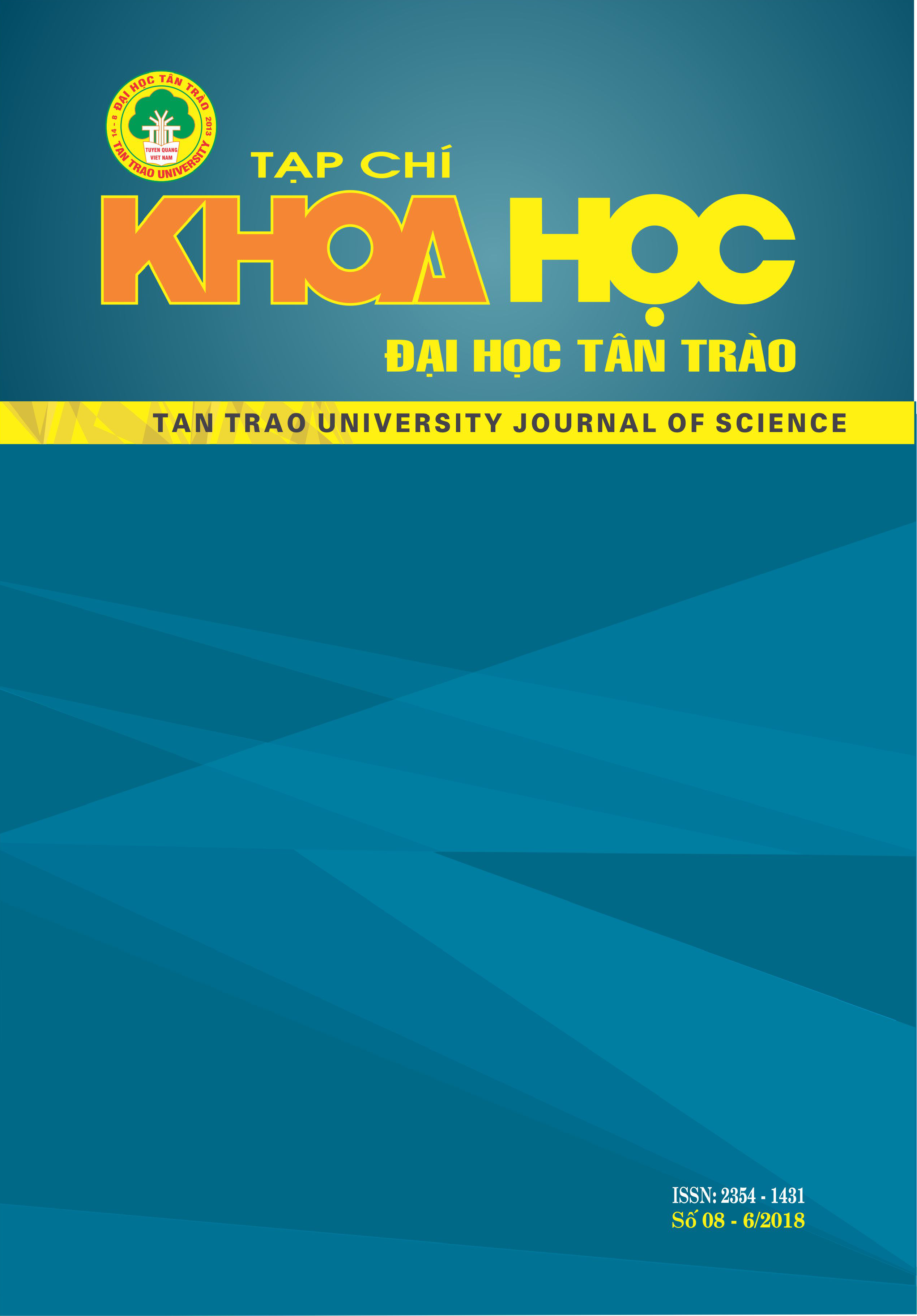Tính chất quang – từ của vật liệu Batio3 pha tạp Fe tại vùng biên pha cấu trúc
DOI:
https://doi.org/10.51453/2354-1431/2018/237Từ khóa:
Fe-BaTiO3, váºt liệu Ä‘a pha Ä‘iện từ, hấp thụ, huỳnh quang, tÃnh chất quang-từ.Tóm tắt
Vật liệu đa pha điện từ BaTi1-xFexO3 (0,0 ≤ x ≤ 0,18) được chế tạo bằng phương pháp phản ứng pha rắn. Sự chuyển pha cấu trúc và tính chất quang - từ của vật liệu đã được khảo sát chi tiết. Kết quả cho thấy, khi Fe thay thế cho Ti, cấu trúc của vật liệu chuyển từ tứ giác (P4mm) sang lục giác (P63/mmc). Sự xuất hiện của các mức tạp chất Fe kết hợp với các mức tạp do sự khuyết thiếu ôxy, sai hỏng mạng tạo nên sự chồng chập, mở rộng dải hấp thụ và làm dịch bờ hấp thụ về phía bước sóng dài. Chúng tôi cũng chỉ ra rằng, các ion Fe3+ và Fe4+ đã thay thế cho ion Ti4+ trong cấu trúc tứ giác và lục giác của vật liệu BaTiO3. Chúng tôi cho rằng, tính chất sắt từ của vật liệu BaTi1-xFexO3 có nguồn gốc từ những sai hỏng mạng và tương tác trao đổi giữa các ion Fe3+ và Fe4+.
Tải xuống
Tài liệu tham khảo
1. G Manfred Fiebig, Thomas Lottermoser, Dennis Meier and Morgan Trassin (2016), The evolution of multiferroics, Nature Reviews 1, 1-14;
2. F. Lin, D. Jiang, X. Ma and W. Shi (2008), "Influence of doping concentration on room-temperature ferromagnetism for Fe-doped BaTiO3 ceramics", J. Magn. Magn. Mater. 320, pp. 691-694;
3. N. V. Dang, T. D. Thanh, L. V. Hong, V. D. Lam, and The-Long Phan (2011), Structural, optical and magnetic properties of polycrystalline BaTi1-xFexO3 ceramics, Journal of Applied Physics 110, 043914-7;
4. Ha M. Nguyen, N. V. Dang, Pei-Yu Chuang, T. D. Thanh, Chih-Wei Hu, Tsan-Yao Chen, V. D. Lam, Chih-Hao Lee and L. V. Hong (2011), Tetragonal and hexagonal polymorphs of BaTi1-xFexO3- multiferroics using x-ray and Raman analyses, Applied Physics Letters 99, 202501-3;
5. Yukikuni Akishige, Youichi Yamazaki and Nobuo Môri (2004), "Pressure Induced Insulator-Metal Transition in Hexagonal BaTiO3-δ", Journal of the Physical Society of Japan 73 (5), pp. 1267-1272;
6. Shubin Qin, Duo Liu, Zhiyuan Zuo, Yuanhua Sang, Xiaolin Zhang, Feifei Zheng, Hong Liu, and Xian-Gang Xu (2010), UV-Irradiation-Enhanced Ferromagnetism in BaTiO3, J. Phys. Chem. Lett 1, 238;
7. M. F. C. Gurgel, J. W. M. Espinosa, A. B. Campos, I. L. V. Rosa, M. R. Joya, A. G. Souza, M. A. Zaghete, P. S. Pizani, E. R. Leite, J. A. Varela, E. Longo (2007), "Photoluminescence of crystalline and disordered BTO:Mn powder: Experimental and theoretical modeling", Journal of Luminescence 126, pp. 771-778;
8. Ming-Sheng Zhang, Jian Yu, Wan-chun Chen and Zhen Yin (2000), "Optical and structral properties of pure and Ce-doped nanocrystals of barium titanate", Progress in Crystal Growth and Characteriztion of Materials, pp. 33-42;
9. Soumya Rajan, P.M. Mohammed Gazzali, G. Chandrasekaran (2017), Impact of Fe on structural modification and room temperature magnetic ordering in BaTiO3, Spectrochimica Acta Part A: Molecular and Biomolecular Spectroscopy 171, 80–89;
10. M. Ikeya, New Applications of Electron Spin Resonance (World Scientific, 1993).
Tải xuống
Đã Xuất bản
Cách trích dẫn
Số
Chuyên mục
Giấy phép

Tác phẩm này được cấp phép theo Giấy phép Quốc tế Creative Commons Attribution-ShareAlike 4.0 .
Bài báo được xuất bản ở Tạp chí Khoa học Đại học Tân Trào được cấp phép theo giấy phép Ghi công - Chia sẻ tương tự 4.0 Quốc tế (CC BY-SA). Theo đó, các tác giả khác có thể sao chép, chuyển đổi hay phân phối lại các bài báo này với mục đích hợp pháp trên mọi phương tiện, với điều kiện họ trích dẫn tác giả, Tạp chí Khoa học Đại học Tân Trào và đường link đến bản quyền; nêu rõ các thay đổi đã thực hiện và các nghiên cứu đăng lại được tiến hành theo cùng một bản quyền.
Bản quyền bài báo thuộc về các tác giả, không hạn chế số lượng. Tạp chí Khoa học Tân Trào được cấp giấy phép không độc quyền để xuất bản bài báo với tư cách nhà xuất bản nguồn, kèm theo quyền thương mại để in các bài báo cung cấp cho các thư viện và cá nhân.
Mặc dù các điều khoản của giấy phép CC BY-SA không dành cho các tác giả (với tư cách là người giữ bản quyền của bài báo, họ không bị hạn chế về quyền hạn), khi gửi bài tới Tạp chí Khoa học Đại học Tân Trào, tác giả cần đáp ứng quyền của độc giả, và cần cấp quyền cho bên thứ 3 sử dụng bài báo của họ trong phạm vi của giấy phép.






